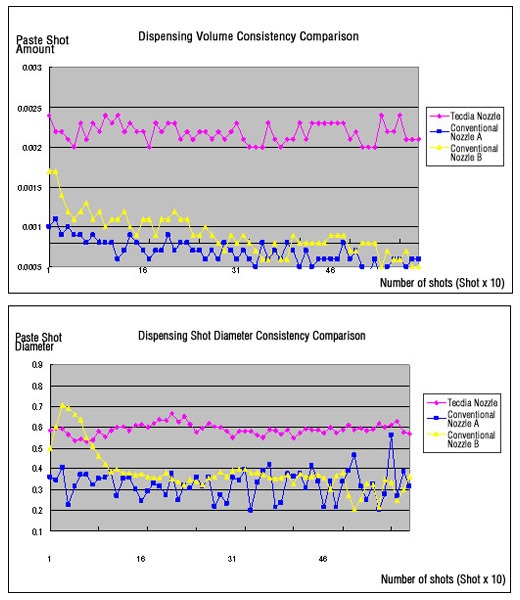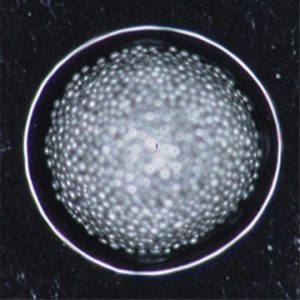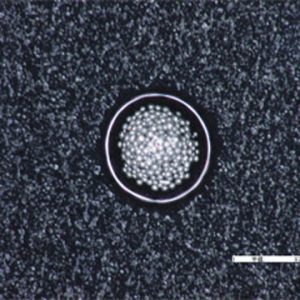



This application required attaching electronic components on substrate circuits using solder paste. The paste must be placed at each attachment location in sufficient volume and blend to properly secure the die, and a good electrical connection while avoiding excess paste that could affect circuit performance. The process must be repeatable in high volume at a rapid pace.
Paste description: a mixture of solids (solder particles) and liquids (fluxes) which must remain blended in the correct proportions when dispensed out of the nozzle tip.
Paste mixture control: automated dispensing requires precise control of the pressure applied to push the paste out of the nozzle with the correct application at the right speed.
The correct application refers to the volume, shape, and blend of the paste. When solder paste is dispensed under high pressure, the differences in the coefficients of the resistance of the solids and liquids affect the flow rate. As they are pushed through the needle or nozzle blend separation can occur. This phenomenon leads to changes in the viscosity of the paste material that can clog the needle, causing inconsistent application amounts, and overall defective adhesion. This can cause a myriad of problems when mass producing electronic products.
The instantaneous changes in the mixing ratio of the adhesive paste material is affected by the dispensing pressure. The key to this approach was to analyze the dispensing pressure and develop a nozzle that would increase the flow of the material in order to reduce the unblending of the solder. This required that we improve the alignment of the nozzle intake to the dispenser syringe so that the pressure on the dispersant was evenly distributed with minimum back pressure. We also wanted the flow to be as frictionless as possible.
We succeeded in machining the interior of the nozzle to be the same diameter as the connecting syringe. By using a machining precision of only 0.001mm, we produced nozzles that eliminate separation due to differences in material flow.

Ratio of Solder Particle to Flux


| 1.We developed the nozzle’s interior shape and surface to lower the resistance inside the nozzle for better flow and reduced friction.
|
| 2.By making the diameter of the apertures of the nozzle body and syringe the same, we achieved a smooth flow of solder.
|
 +1-408-748-0100
+1-408-748-0100
Office Hours: 8:30am - 5:30pm PST
